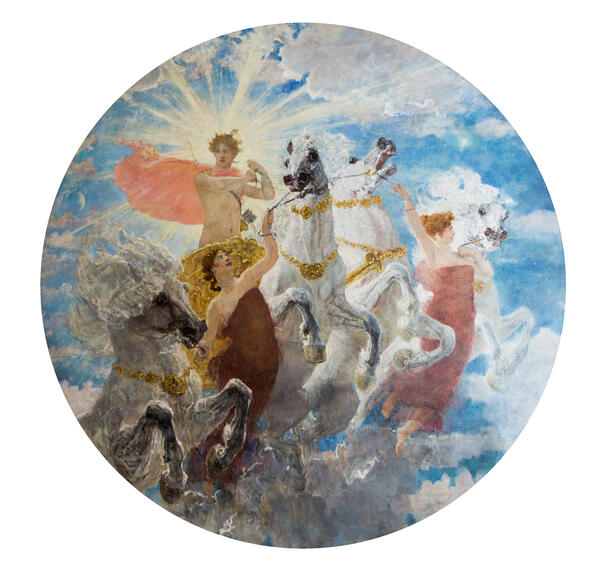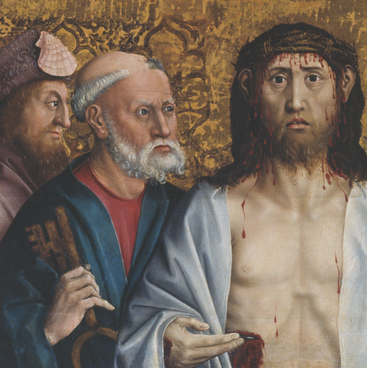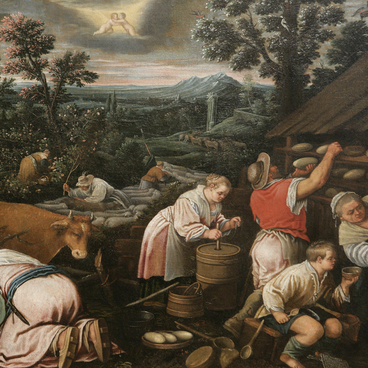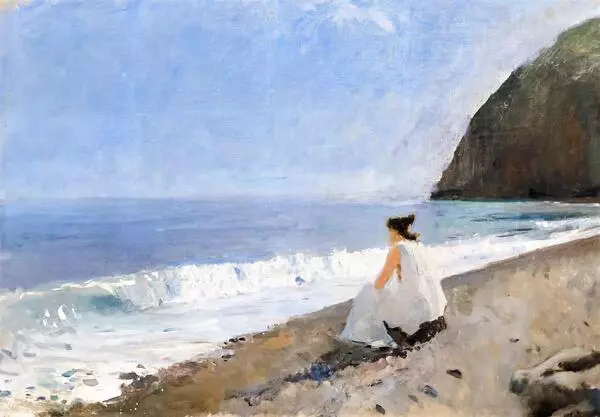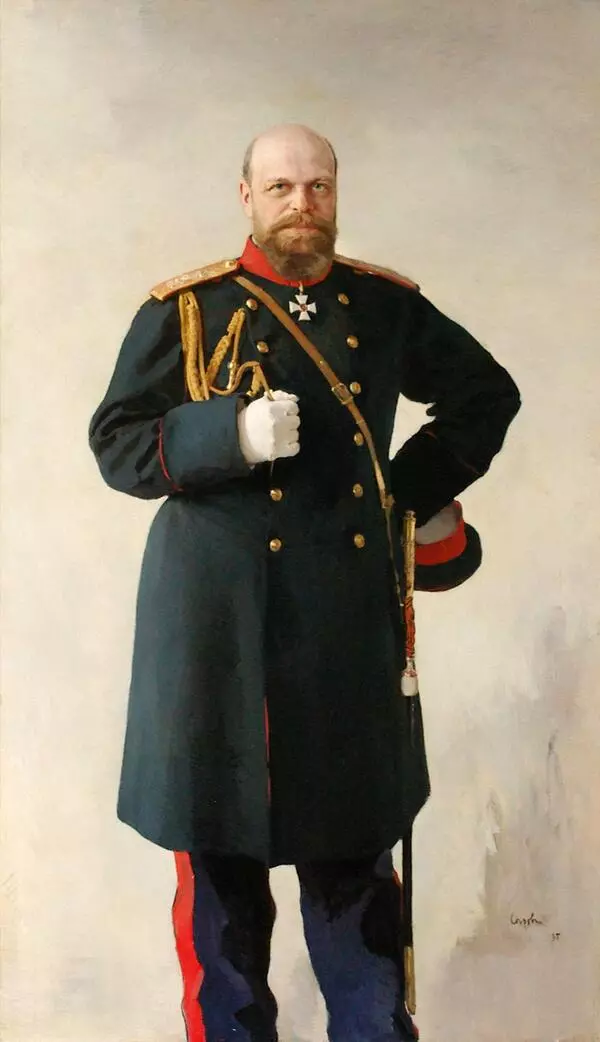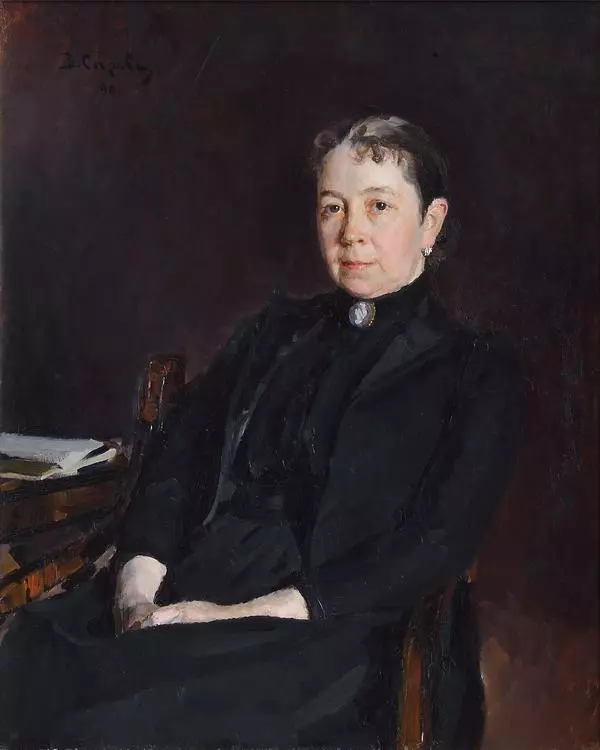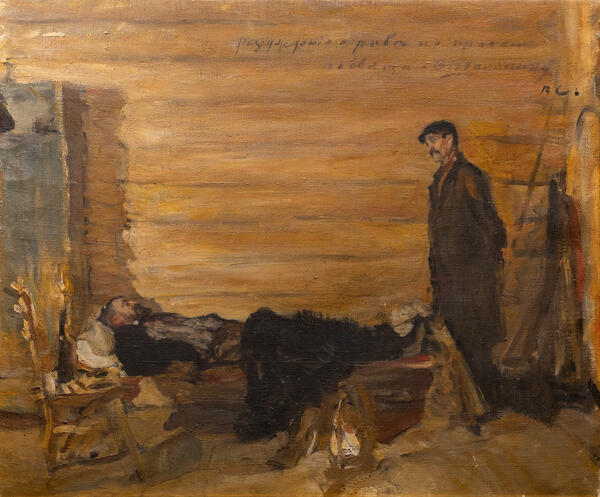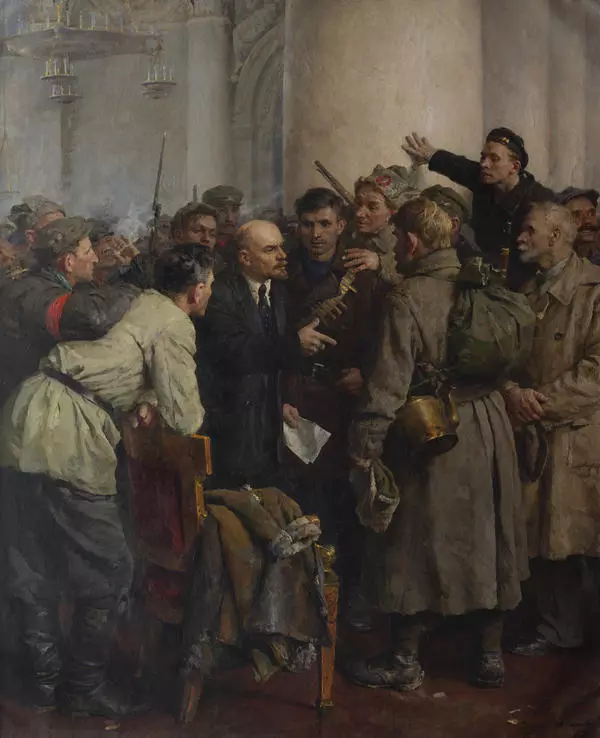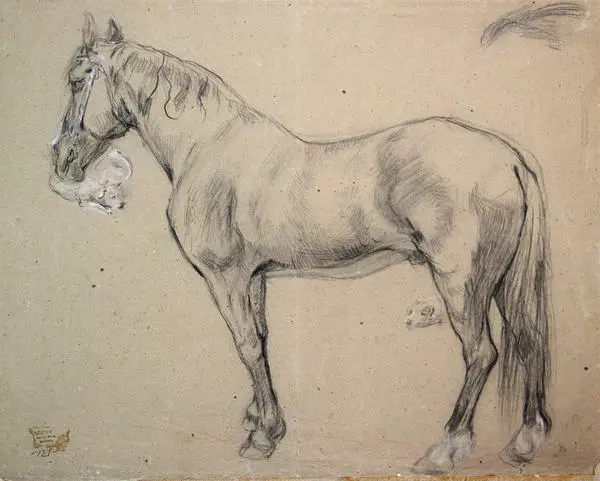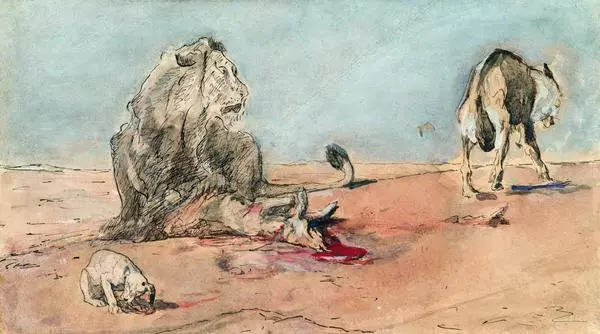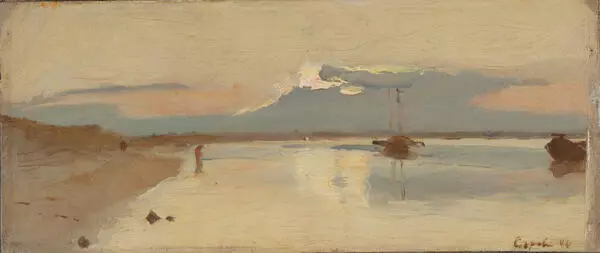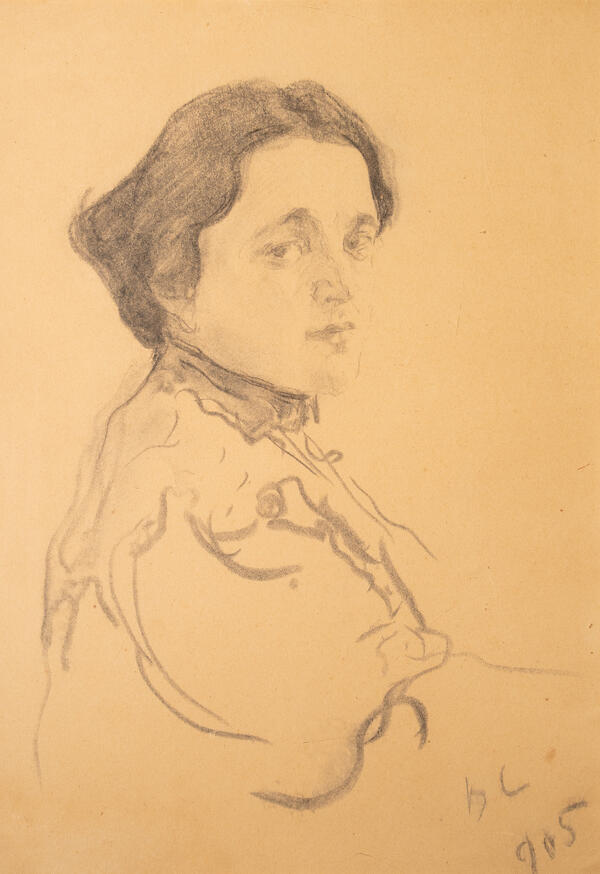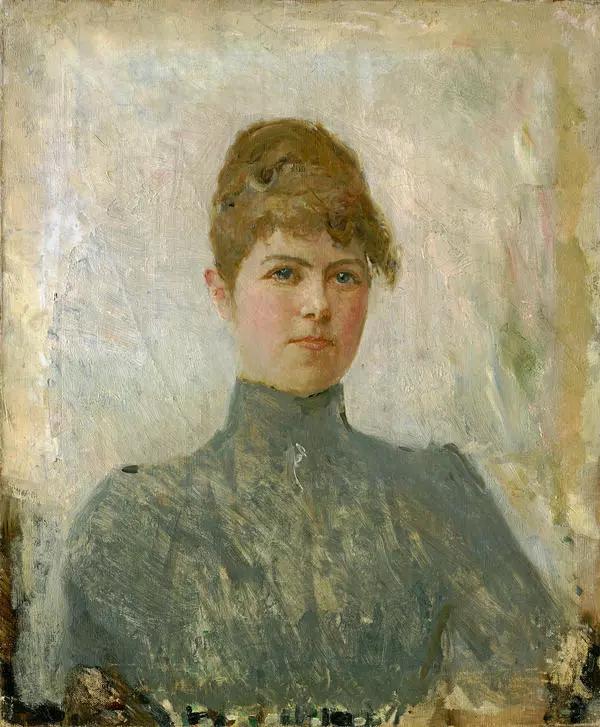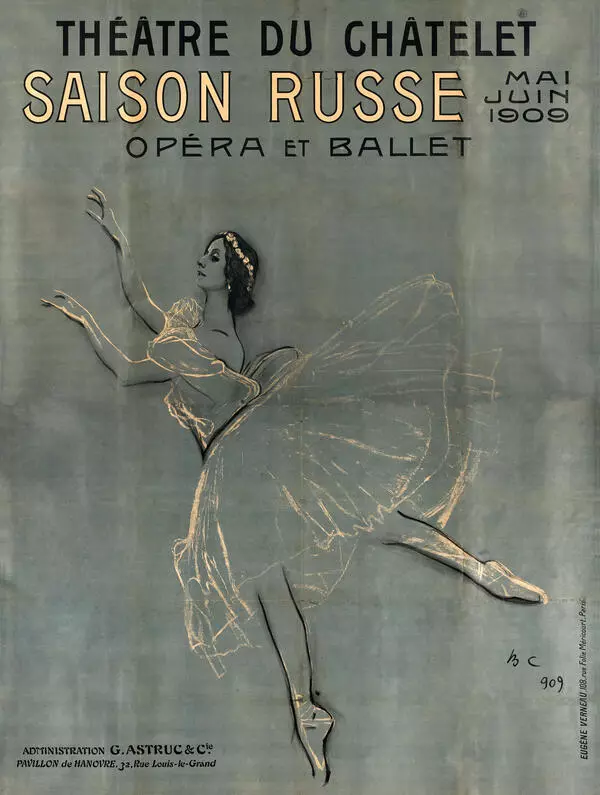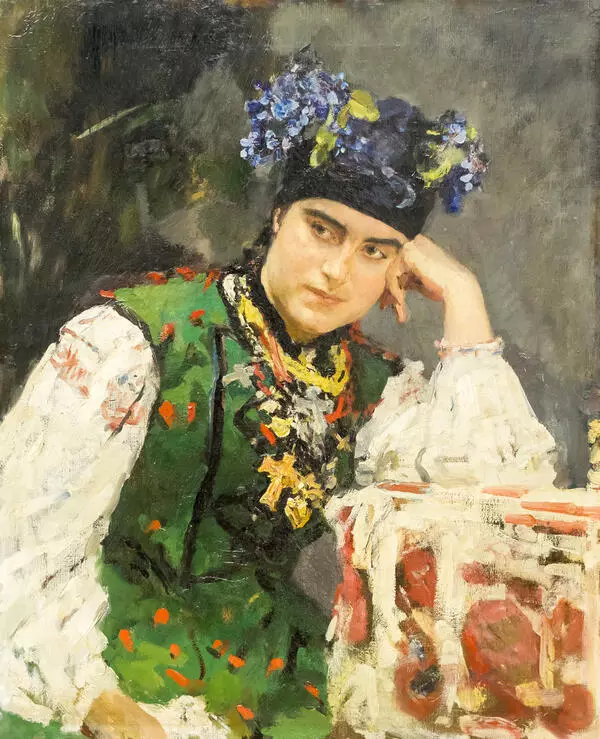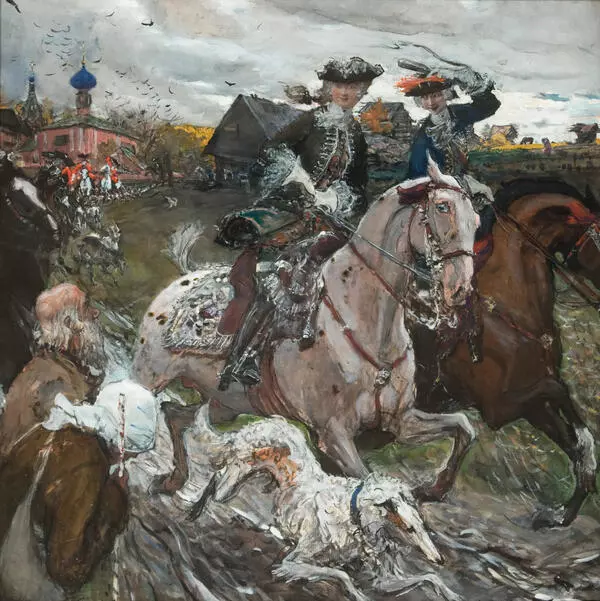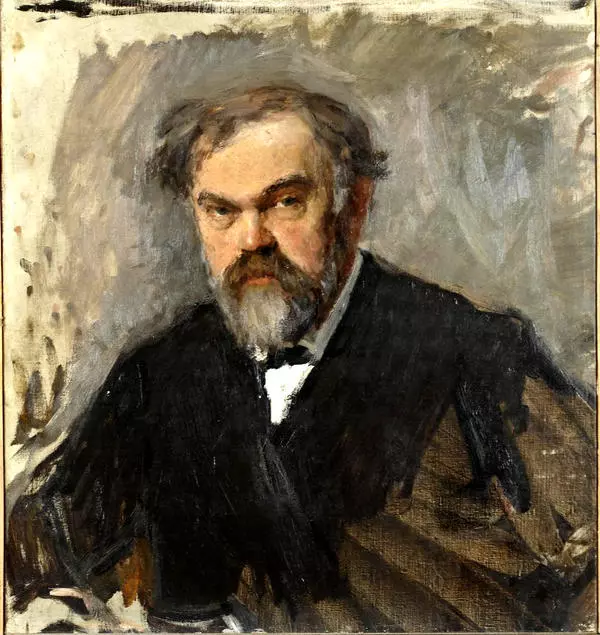The ‘Phoebe the radiant’, created by Valentin Serov, an outstanding Russian artist of the late 19th and early 20th century. In 1885, he finished his studies at the St. Petersburg Academy of Arts, and in the winter of 1887, he was commissioned by the Councilor of State, Tula landowner Nikolai Seleznev to decorate the ceiling in the library of his house in Arkhangelskoye, Yefremovsky Uezd, Tula Governorate.
Having inherited the estate from his father, Seleznev built a large house in Arkhangelskoye estate. In 1905 it was destroyed by fire. According to witnesses, it was a magnificent two-story Italian-style mansion with luxurious interior decoration.
The order, received from Seleznev, allowed the young artist to take a trip to Italy to improve his skills. Working on the painting, Serov turned to monumental painting and took the theme from mythology. Using art, the artist conveyed poetry of the ancient world. In the center of the work, there is Apollo, the god of sunlight, patron of arts. According to Greek mythology, he gave the earth warmth and light, making his daily journey through the sky on a golden chariot. He was nicknamed Phoebe, which means ‘radiant’, ‘shining.’ In a halo of sunlight, he appears in the artist’s work in a chariot harnessed by four white horses. Apollo was also called “srebroluky” (silver bowed): in the picture, there are silver arrows in his quiver with which the god of light punishes the evil he noticed on the ground. Two goddesses help control powerful horses — the goddess of the Morning Dawn (right) and the goddess of the Evening Dawn (left).
The “Phoebe the radiant” was severely damaged during a fire at the estate in 1905. In a very bad condition the it was transferred to the Efremov Museum named after M.Yu. Lermontov, and then to Tula Museum to be kept. In 1947 the work was sent to Moscow to the All-Russian Art Scientific and Restoration Center named after I. E. Grabar for restoration, which lasted almost ten years. After that, the painting was returned to the museum, and today it is displayed in permanent exposition.
Having inherited the estate from his father, Seleznev built a large house in Arkhangelskoye estate. In 1905 it was destroyed by fire. According to witnesses, it was a magnificent two-story Italian-style mansion with luxurious interior decoration.
The order, received from Seleznev, allowed the young artist to take a trip to Italy to improve his skills. Working on the painting, Serov turned to monumental painting and took the theme from mythology. Using art, the artist conveyed poetry of the ancient world. In the center of the work, there is Apollo, the god of sunlight, patron of arts. According to Greek mythology, he gave the earth warmth and light, making his daily journey through the sky on a golden chariot. He was nicknamed Phoebe, which means ‘radiant’, ‘shining.’ In a halo of sunlight, he appears in the artist’s work in a chariot harnessed by four white horses. Apollo was also called “srebroluky” (silver bowed): in the picture, there are silver arrows in his quiver with which the god of light punishes the evil he noticed on the ground. Two goddesses help control powerful horses — the goddess of the Morning Dawn (right) and the goddess of the Evening Dawn (left).
The “Phoebe the radiant” was severely damaged during a fire at the estate in 1905. In a very bad condition the it was transferred to the Efremov Museum named after M.Yu. Lermontov, and then to Tula Museum to be kept. In 1947 the work was sent to Moscow to the All-Russian Art Scientific and Restoration Center named after I. E. Grabar for restoration, which lasted almost ten years. After that, the painting was returned to the museum, and today it is displayed in permanent exposition.

